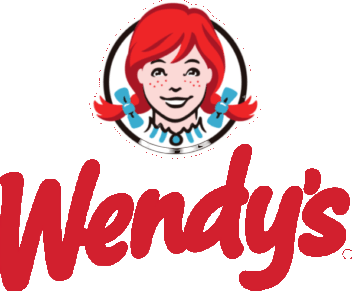Dog owners are increasingly conscious of what they feed their pets, with a focus on ingredients that promote health and vitality. One such ingredient that often features prominently in dog food is chicken meal. This rendered product derived from chicken flesh and skin serves as a concentrated protein source, contributing to the nutritional profile of many canine diets.
Understanding the production process, nutritional value, benefits, quality considerations, common misconceptions, regulatory oversight, and potential allergies and sensitivities associated with chicken meal is crucial for pet owners seeking to make informed decisions about their furry companions’ diet.
Definition of Chicken Meal
Chicken meal is a prevalent ingredient found in numerous dog foods. It is a rendered product derived from chicken flesh and skin, processed to create a concentrated protein source. Unlike fresh chicken, which contains significant moisture content, chicken meal is dehydrated, making it a more concentrated protein source per unit weight. Due to its high protein content, chicken meal is valued as a nutritional component in many dog food formulations.
Production Process
Chicken meal undergoes a meticulous rendering process to transform raw chicken parts into a dry, protein-rich meal suitable for inclusion in dog food. The rendering process involves several key steps, with the aim of efficiently extracting protein while minimizing the presence of moisture and undesirable contaminants.
Rendering Process
During the rendering process, chicken parts such as flesh, skin, and possibly bones are subjected to heat and pressure in specialized rendering facilities. This heat treatment breaks down the raw material, separating fat and moisture from the protein-rich components.
The resulting mixture is then mechanically pressed to extract excess moisture, leaving behind a dry, granular substance known as chicken meal. This meal is subsequently cooled and packaged for use in pet food manufacturing.
Nutritional Value
One of the primary reasons for the widespread use of chicken meal in dog food is its high nutritional value, particularly its protein content. Protein is an essential macronutrient for dogs, supporting various physiological functions and providing the building blocks for muscle development, tissue repair, and overall growth.
Protein Content
Chicken meal is prized for its high protein content, which typically exceeds 60% on a dry matter basis. This concentration of protein makes chicken meal an excellent source of amino acids, including those essential for dogs’ health and wellbeing. Essential amino acids cannot be synthesized by the dog’s body and must be obtained through dietary sources, making chicken meal a valuable component of canine diets.
Benefits for Dogs

The inclusion of chicken meal in dog food offers several benefits for canine health, particularly concerning muscle development and overall nutritional balance.
Muscle Development
The high protein content in chicken meal plays a crucial role in supporting muscle development and maintenance in dogs. Adequate protein intake is especially important for active dogs, working breeds, and those undergoing growth stages such as puppies. By providing a concentrated source of essential amino acids, chicken meal helps dogs build and maintain lean muscle mass, contributing to their strength, agility, and overall vitality.
Quality Considerations
While chicken meal offers significant nutritional benefits, not all products are created equal. Quality considerations, including ingredient sourcing and processing methods, can greatly influence the nutritional integrity and safety of chicken meal used in dog food formulations.
Ingredient Sourcing
The quality of chicken meal can vary depending on factors such as the sourcing of raw materials and the manufacturing processes employed. Ideally, chicken meal should be sourced from reputable suppliers that prioritize the use of high-quality, human-grade chicken parts.
Human-grade ingredients undergo rigorous quality control measures to ensure they meet safety and nutritional standards suitable for consumption. By selecting dog foods made with high-quality chicken meal, pet owners can help ensure that their furry companions receive the best possible nutrition.
Common Misconceptions
Despite its nutritional benefits, chicken meal is sometimes subject to misconceptions, particularly regarding its composition and suitability for canine consumption.
Not the Same as By-Products
One common misconception is that chicken meal is synonymous with chicken by-products, such as feathers, heads, feet, and intestines. In reality, chicken meal is a concentrated protein source derived from muscle tissue and skin, with minimal inclusion of non-nutritive components. Unlike chicken by-products, which may contain less desirable parts of the chicken carcass, chicken meal provides a highly digestible and nutritionally balanced source of protein for dogs.
Regulatory Oversight
To ensure the safety and nutritional adequacy of dog food products containing chicken meal, regulatory oversight is essential. Organizations such as the Association of American Feed Control Officials (AAFCO) establish standards and guidelines for pet food manufacturers to follow, including requirements related to ingredient quality, labeling, and nutritional adequacy.
AAFCO Standards
Chicken meal used in dog food must meet AAFCO standards for ingredient sourcing, processing, and labeling. These standards are designed to protect the health and wellbeing of pets by ensuring that the ingredients used in pet food products are safe, nutritious, and accurately represented on product labels. By adhering to AAFCO guidelines, pet food manufacturers help consumers make informed choices about the products they purchase for their beloved companions.
Potential Allergies and Sensitivities
While chicken meal is a valuable source of protein for many dogs, some pets may experience allergies or sensitivities to chicken-based ingredients. Pet owners should be aware of the signs of food allergies, which can manifest as skin irritations, gastrointestinal upset, or other adverse reactions.
Addressing Concerns
If a dog exhibits signs of food allergies or sensitivities, pet owners should consult with a veterinarian to determine the underlying cause and develop an appropriate dietary plan. In some cases, switching to a dog food formula made with alternative protein sources may help alleviate symptoms and improve the dog’s overall health and wellbeing.
Conclusion
Chicken meal is a versatile and nutritionally valuable ingredient commonly found in dog food formulations. Understanding its production process, nutritional benefits, quality considerations, and potential allergenic properties is essential for pet owners seeking to provide their furry companions with balanced and nourishing diets.
By selecting high-quality dog foods made with responsibly sourced chicken meal, pet owners can help ensure the health and vitality of their beloved canine companions for years to come.
Read Also: How Safe Are Nitrile Gloves for Food Handling?

